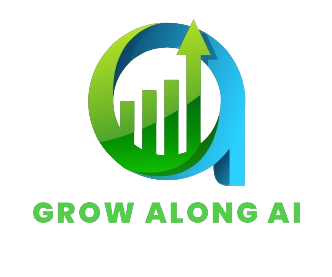Chatbots: Revolutionizing Customer Interaction and Business Efficiency
Chatbots have become a cornerstone of modern digital interaction, transforming how businesses engage with customers and streamline operations. These AI-driven tools are capable of handling a wide range of tasks, from answering customer queries and providing support to automating routine processes and enhancing user experiences. In this blog post, we’ll explore what chatbots are, the key concepts behind them, their practical applications across various industries, and the tools and platforms available for implementing chatbot solutions. We’ll also discuss the benefits and risks associated with using chatbots in business.


What is a Chatbot?
A chatbot is an artificial intelligence (AI) application designed to simulate human conversation. It interacts with users through text or voice, providing responses based on pre-defined rules or advanced AI algorithms. Chatbots can be deployed on websites, messaging platforms, mobile apps, and social media, offering users an immediate and interactive way to get information, perform tasks, and resolve issues.
To understand how chatbots work, it’s essential to familiarize yourself with several foundational concepts:
- Natural Language Processing (NLP): NLP is a branch of AI that enables chatbots to understand and interpret human language. Through NLP, chatbots can process user inputs, recognize intent, and generate appropriate responses. This involves parsing text, understanding context, and handling various language nuances.
- Rule-Based Chatbots: Rule-based chatbots operate on a set of predefined rules and scripts. They follow specific patterns to provide responses based on user inputs. While these chatbots are straightforward and effective for simple tasks, they lack the flexibility to handle complex or unexpected interactions.
- AI-Powered Chatbots: AI-powered chatbots use machine learning (ML) and NLP to understand and respond to user queries more dynamically. They learn from interactions over time, improving their responses and handling more complex requests. These chatbots can adapt to new information and offer more personalized
- Intent Recognition: Intent recognition involves identifying the purpose or goal behind a user's message. By understanding user intent, chatbots can provide relevant responses and guide users to the appropriate actions or solutions.
- Entity Recognition: Entity recognition is the process of identifying specific pieces of information within a user's message, such as names, dates, locations, or product details. This helps chatbots extract relevant data and tailor their responses accordingly.
- Dialogue Management: Dialogue management is the component of a chatbot that handles the flow of conversation. It manages context, keeps track of the conversation history, and ensures that interactions are coherent and relevant.
- Integration: Chatbots can be integrated with various systems, such as customer relationship management (CRM) tools, databases, and third-party services. This integration allows chatbots to access and update information, provide personalized responses, and automate processes.
Chatbots are being used across various industries to enhance customer service, automate processes, and improve user experiences:
- Customer Support: Chatbots are widely used in customer support to provide instant responses to common queries, troubleshoot issues, and guide users through processes. They can handle a high volume of interactions simultaneously, reducing wait times and improving customer satisfaction.
- E-Commerce: In e-commerce, chatbots assist with product recommendations, order tracking, and managing returns or exchanges. They can provide personalized shopping experiences, answer product-related questions, and streamline the purchasing process.
- Healthcare: Healthcare chatbots help patients schedule appointments, provide information about symptoms or treatments, and offer medication reminders. They can also assist with administrative tasks, such as managing patient records and processing insurance claims.
- Finance: In the financial sector, chatbots are used for tasks such as account management, transaction inquiries, and fraud detection. They can provide real-time updates on account balances, assist with loan applications, and offer financial advice.
- Travel and Hospitality: Travel and hospitality chatbots assist with booking flights, hotels, and rental cars. They can provide travel information, recommend destinations, and help with itinerary changes or cancellations.
- Education: Educational chatbots support students by providing information about courses, assignments, and schedules. They can also assist with administrative tasks, such as enrolment and grading, and offer personalized learning support.
- Human Resources: HR chatbots streamline recruitment processes by screening resumes, scheduling interviews, and answering candidate questions. They can also assist with employee onboarding, benefits management, and policy inquiries.
- Real Estate: In real estate, chatbots help potential buyers and renters find properties, schedule viewings, and obtain information about listings. They can provide property recommendations based on user preferences and assist with the application process.
Several tools and platforms are available to help businesses build and deploy chatbots:
- Dialogflow: Developed by Google, Dialogflow is a powerful chatbot development platform that supports text and voice interactions. It offers NLP capabilities, intent recognition, and integration with various messaging platforms.
- Microsoft Bot Framework: The Microsoft Bot Framework provides tools and services for building, testing, and deploying chatbots. It includes pre-built templates, natural language understanding, and integration with Microsoft Azure services.
- IBM Watson Assistant: IBM Watson Assistant is an AI-driven chatbot platform that offers advanced NLP, intent recognition, and dialogue management. It can be integrated with various channels and systems to deliver personalized interactions.
- Chatfuel: Chatfuel is a user-friendly chatbot builder designed for Facebook Messenger and other messaging platforms. It offers drag-and-drop functionality, integration with external services, and support for both rule-based and AI-powered chatbots.
- ManyChat: ManyChat is a chatbot platform focused on Facebook Messenger, SMS, and web chat. It provides easy-to-use tools for creating chatbots, automating workflows, and managing user interactions.
- Tars: Tars is a chatbot builder that allows users to create conversational landing pages and lead generation chatbots. It offers a visual editor, integrations with CRM and marketing tools, and support for various use cases.
- Rasa: Rasa is an open-source chatbot framework that provides flexibility and customization for building AI-powered chatbots. It supports advanced NLP, dialogue management, and integration with different platforms.
- Drift: Drift is a conversational marketing platform that uses chatbots to engage website visitors, qualify leads, and schedule meetings. It offers features for personalized interactions, automated follow-ups, and sales pipeline management.
Implementing chatbots offers numerous advantages for businesses:
- 24/7 Availability: Chatbots provide round-the-clock support, allowing customers to get assistance and information at any time. This improves accessibility and ensures that users always have a point of contact.
- Cost Savings: By automating routine tasks and interactions, chatbots reduce the need for human resources, leading to cost savings. They can handle a high volume of queries simultaneously, minimizing the need for additional support staff.
- Improved Efficiency: Chatbots streamline processes and reduce response times, enhancing overall efficiency. They can quickly provide information, handle transactions, and guide users through complex workflows.
- Enhanced Customer Experience: Chatbots offer personalized and interactive experiences, improving customer satisfaction. They can provide relevant recommendations, answer queries in real-time, and adapt to user preferences.
- Scalability: Chatbots can easily scale to handle increased volumes of interactions without a proportional increase in resources. This makes them ideal for businesses experiencing growth or seasonal spikes in demand.
- Data Collection and Insights: Chatbots can collect valuable data on user interactions, preferences, and behaviour. This data can be analysed to gain insights into customer needs, improve products or services, and optimize marketing strategies.
While chatbots offer significant benefits, they also present certain risks and challenges:
- Limited Understanding: Chatbots may struggle with complex or ambiguous queries, leading to misunderstandings or incorrect responses. AI-powered chatbots are more adept at handling complex interactions, but they still have limitations.
- User Frustration: If chatbots fail to provide accurate or helpful responses, users may become frustrated and seek alternative support channels. Ensuring a seamless and effective chatbot experience requires continuous monitoring and improvement.
- Privacy and Security: Chatbots handling sensitive information must adhere to data privacy and security regulations. Ensuring that chatbots comply with relevant standards and protect user data is crucial.
- Integration Challenges: Integrating chatbots with existing systems, such as CRM or ERP platforms, can be complex. Ensuring smooth integration and data flow requires careful planning and technical expertise.
- Maintenance and Updates: Chatbots require ongoing maintenance and updates to remain effective. Regularly reviewing and refining chatbot interactions, updating content, and incorporating user feedback is essential for long-term success.
- Bias and Ethical Concerns: AI-powered chatbots can inherit biases from training data, leading to biased responses or discriminatory behaviour. Addressing bias and ensuring ethical behaviour in chatbots is an important consideration.
Need a Sugestions?
Our team of AI experts will work closely with you to unlock the full potential of AI and drive your business forward.
Conclusion
Chatbots are revolutionizing customer interaction and business efficiency, offering numerous benefits from 24/7 availability and cost savings to improved customer experiences and valuable data insights. By leveraging chatbot technology, businesses can enhance their operations, streamline processes, and engage with users in a more dynamic and personalized manner.
However, the successful implementation of chatbots requires careful consideration of the associated risks and challenges, including understanding limitations, ensuring privacy and security, and addressing biases. With the right tools and strategies, businesses can harness the power of chatbots to drive growth and deliver exceptional value to their customers.
Ready to explore the potential of chatbots for your business? We’re here to help you navigate the chatbot landscape, from selecting the right tools to implementing tailored solutions that meet your needs. Let’s transform your customer interactions and operational efficiency with the power of chatbots.

